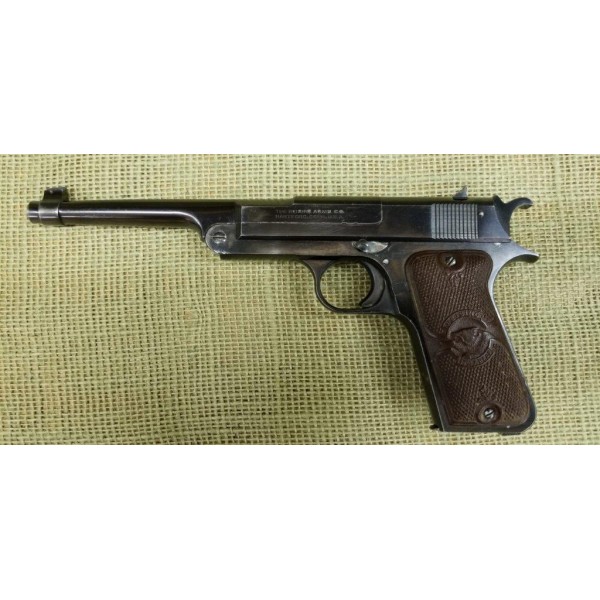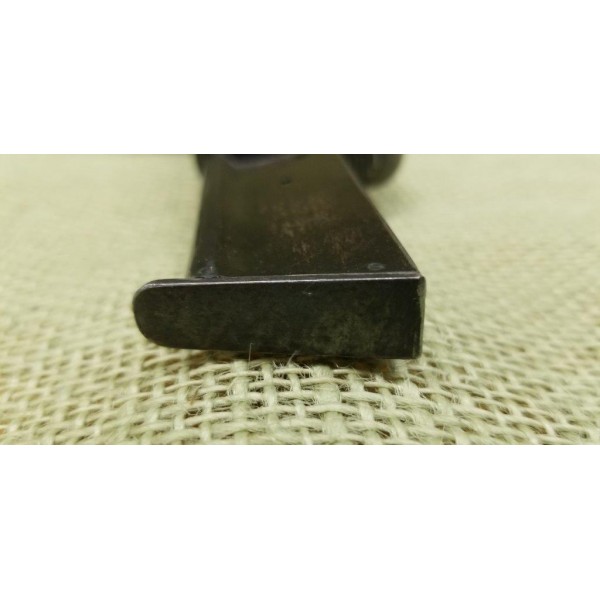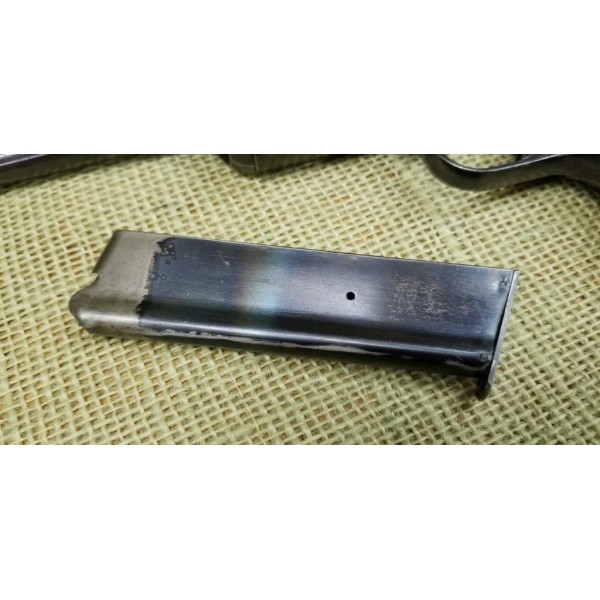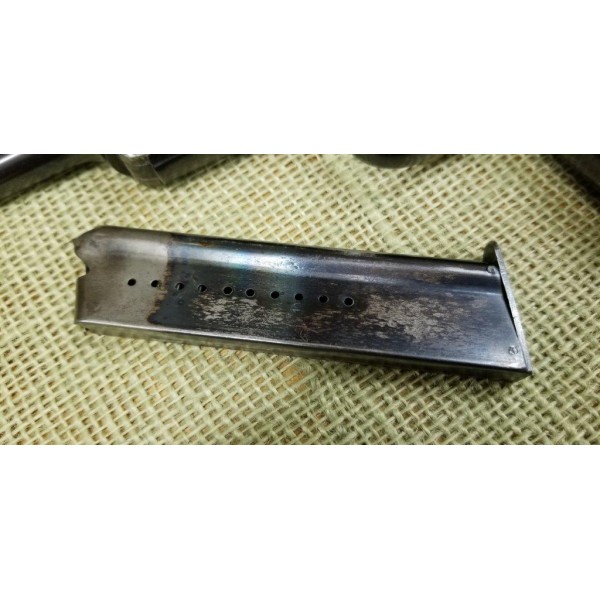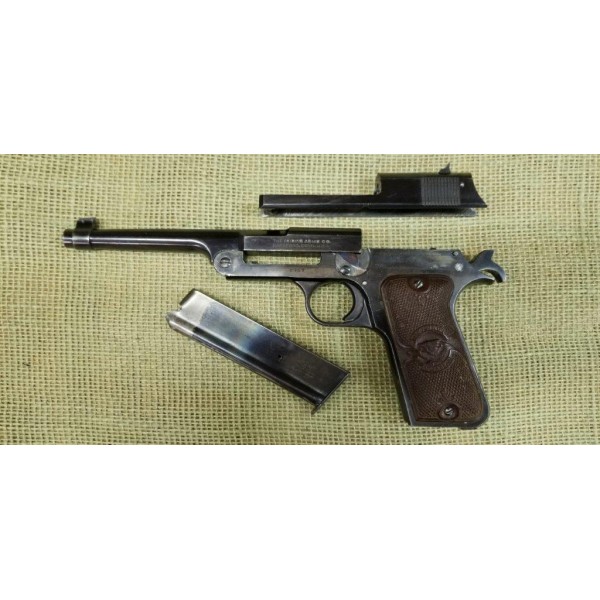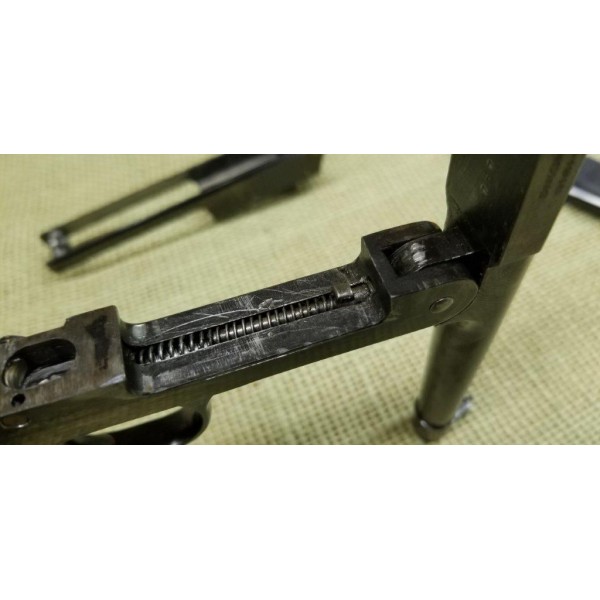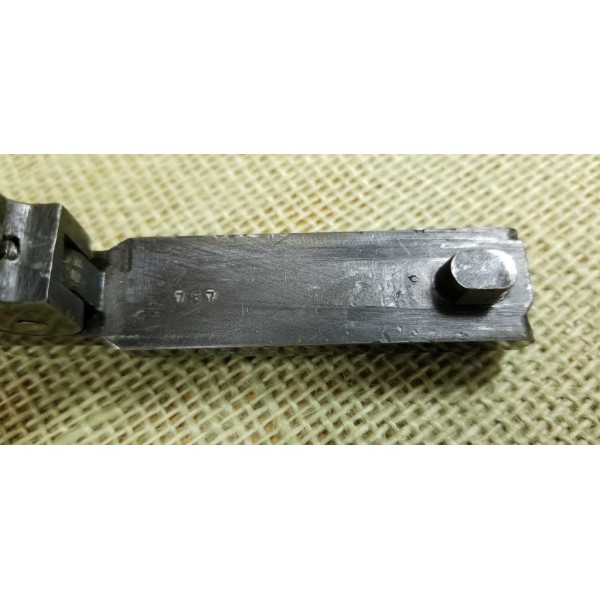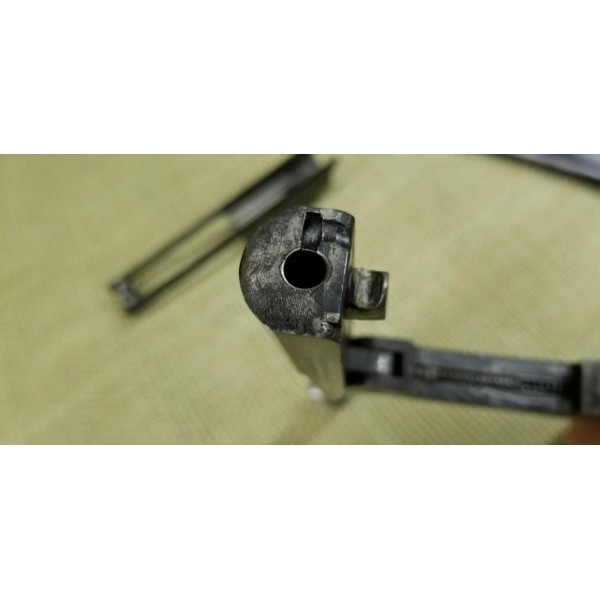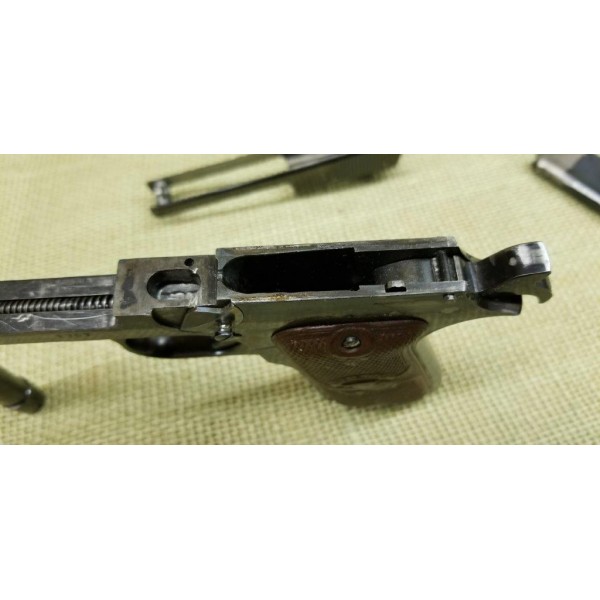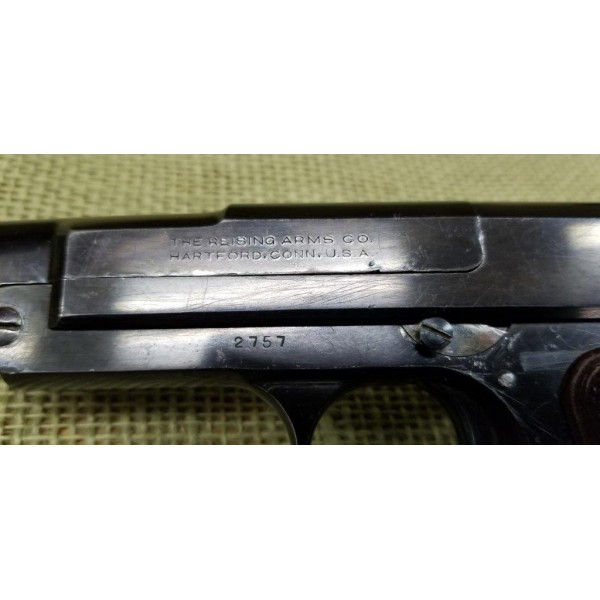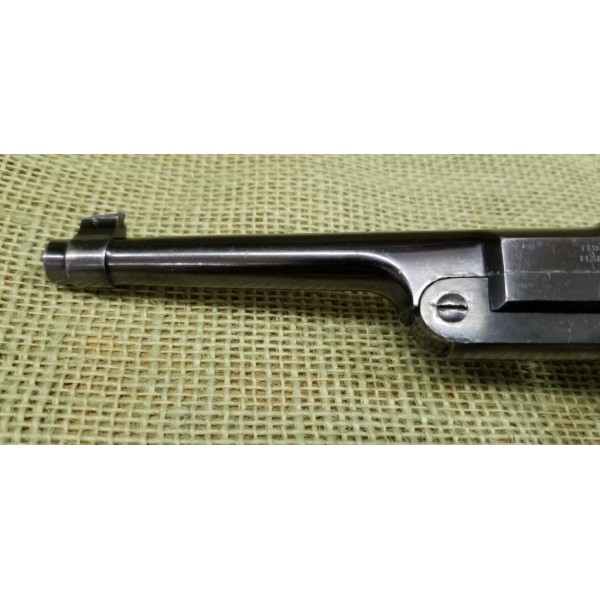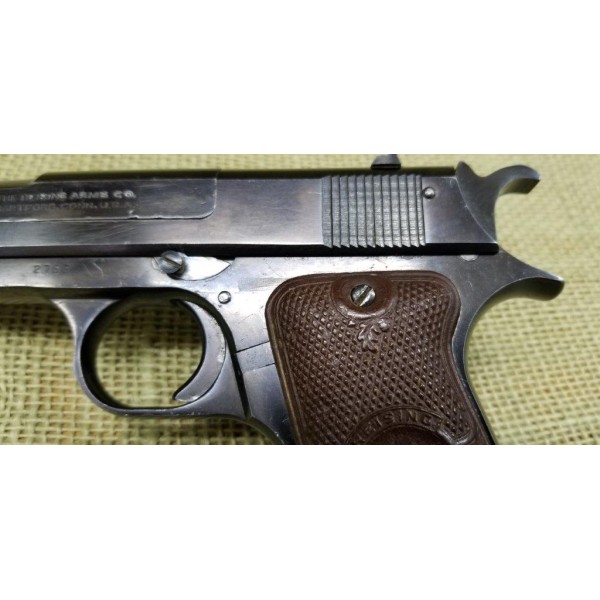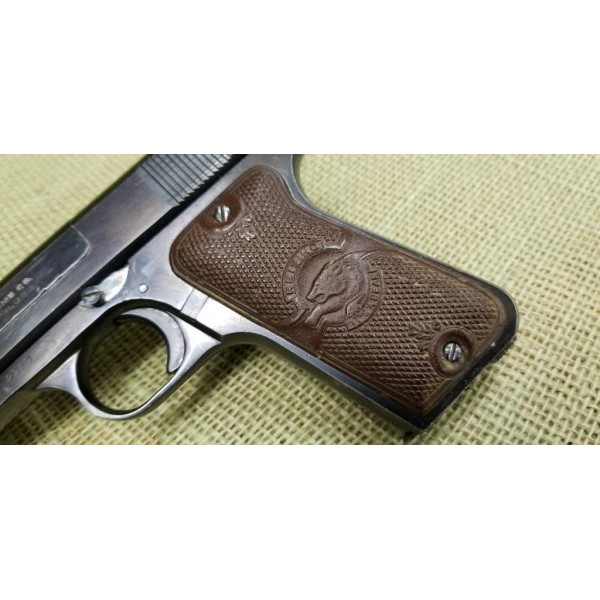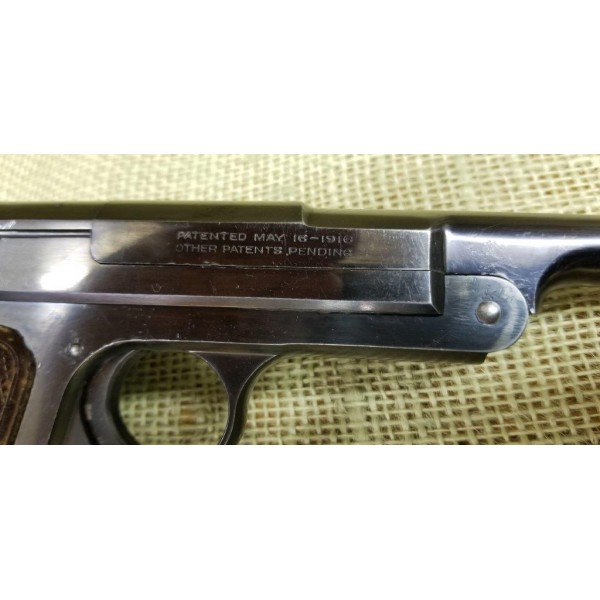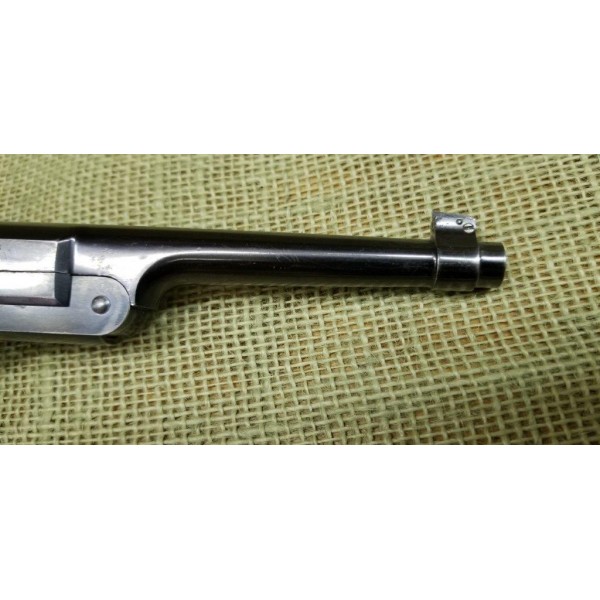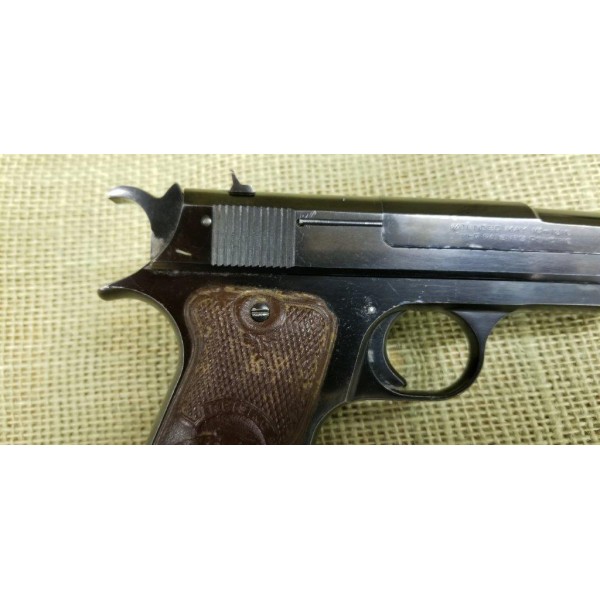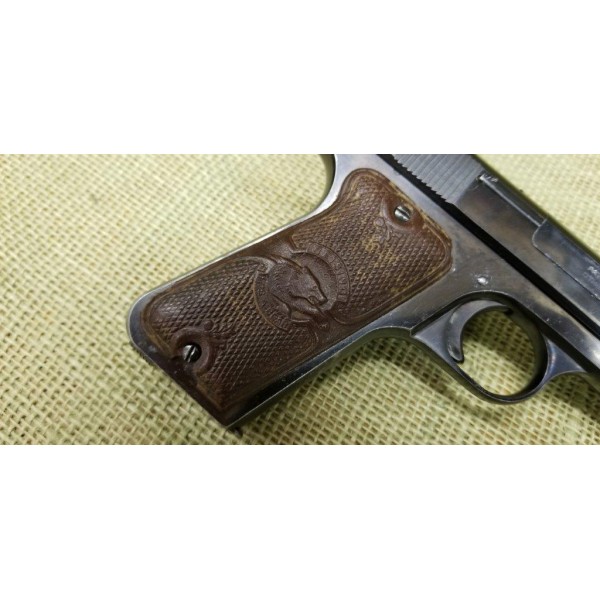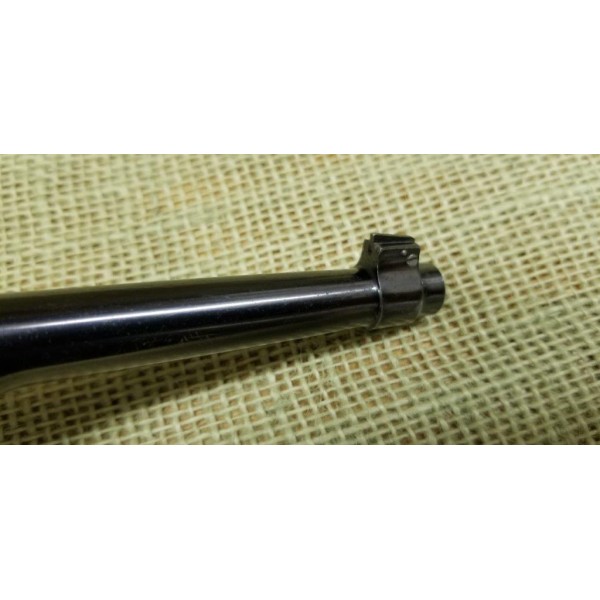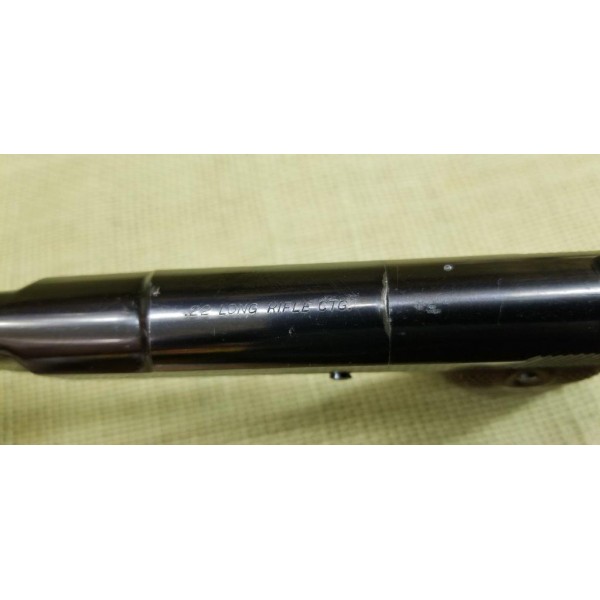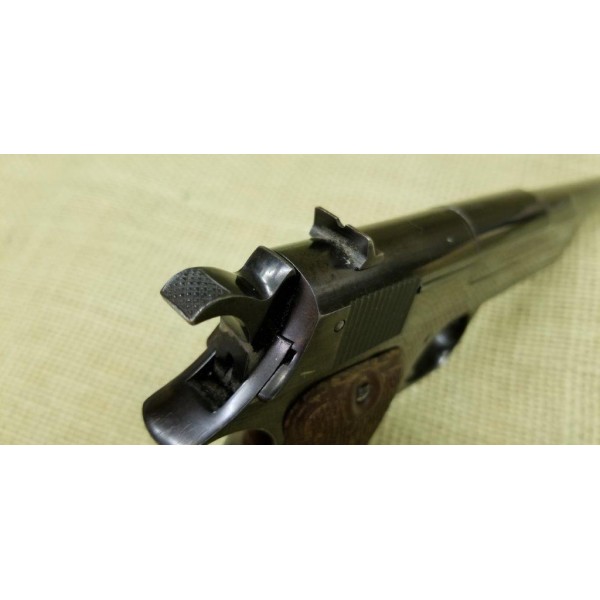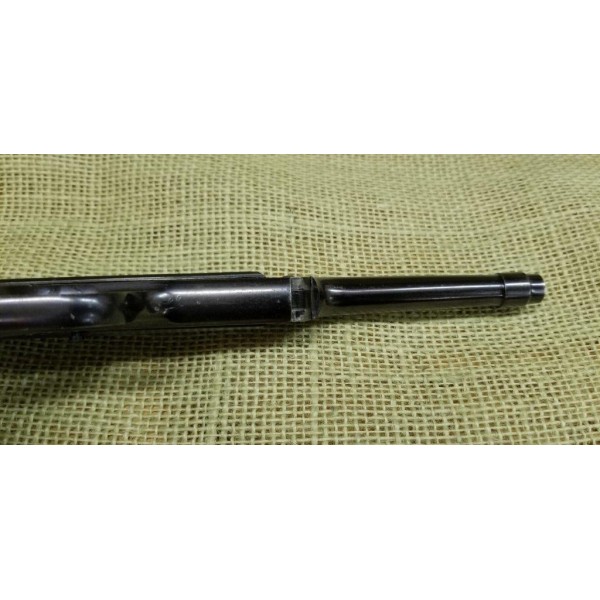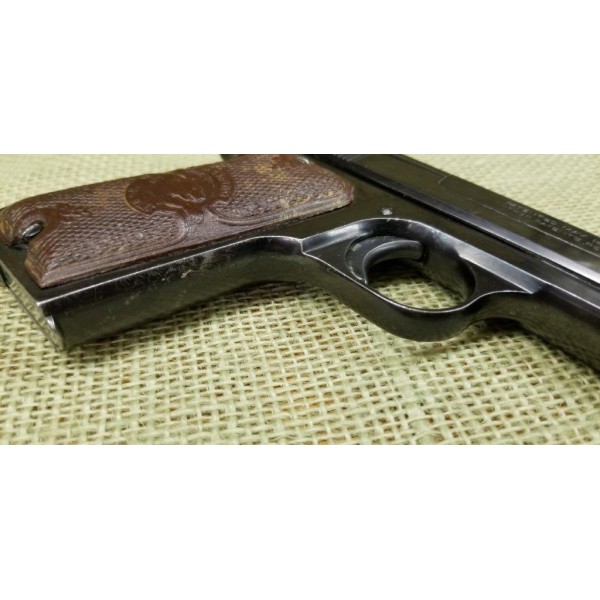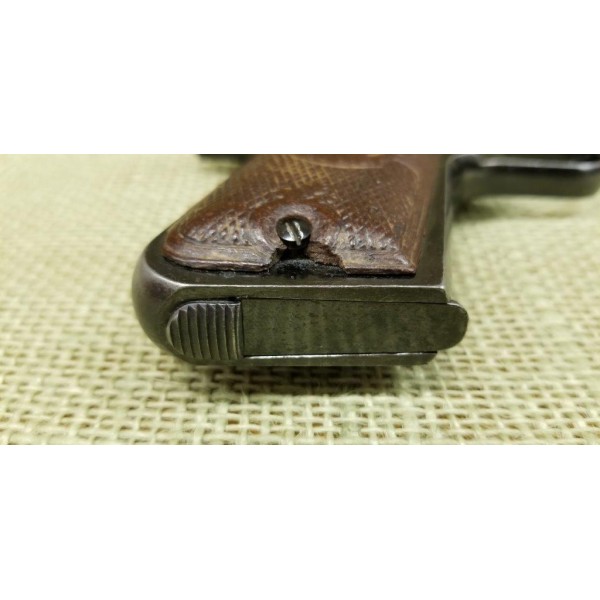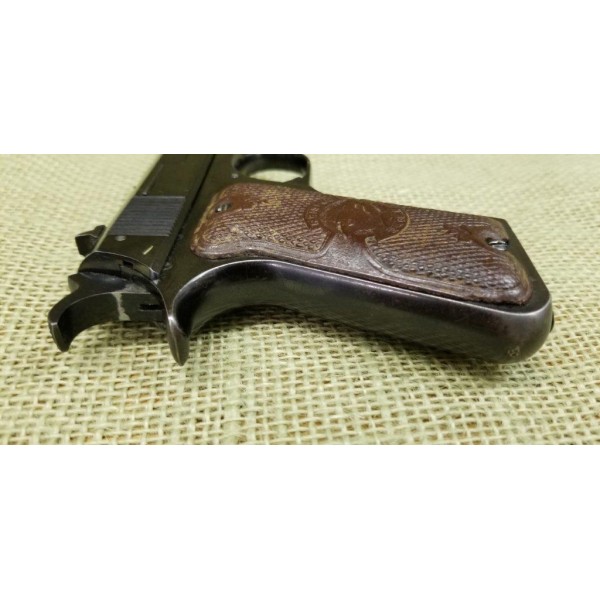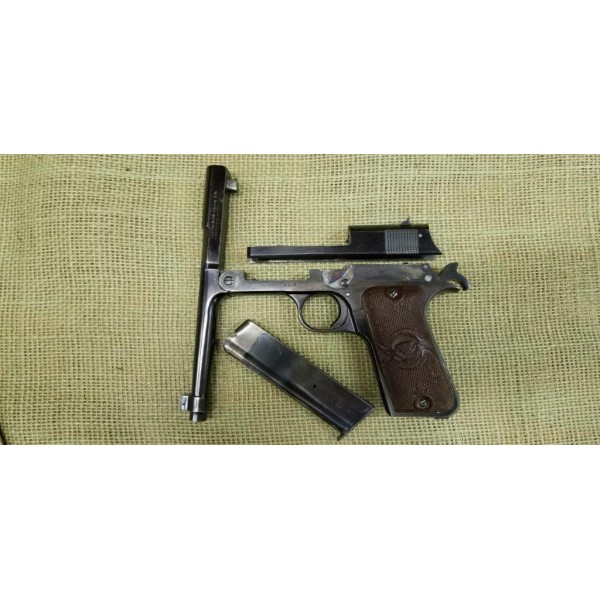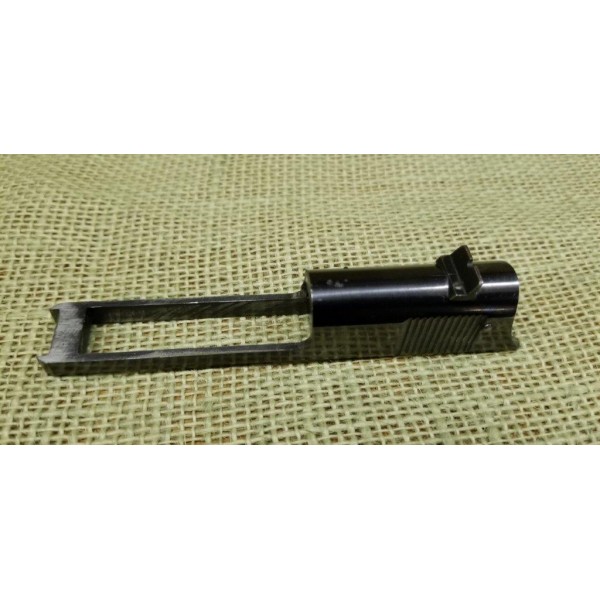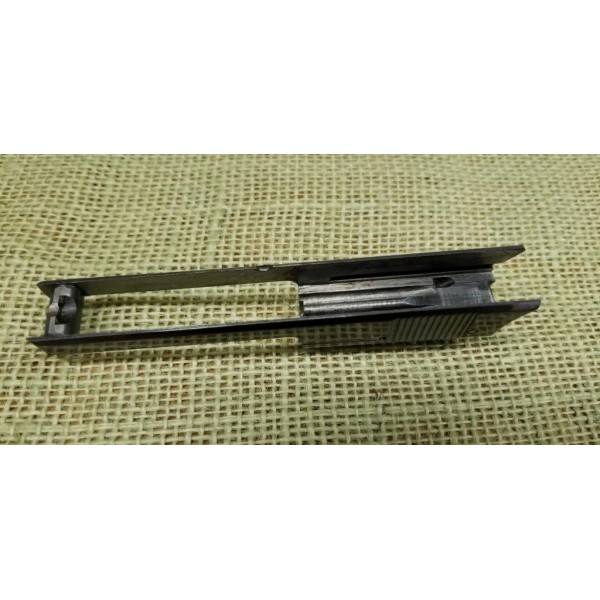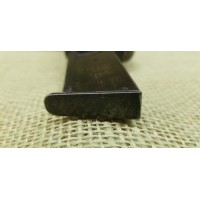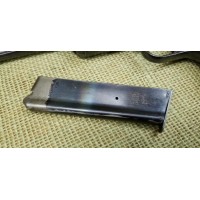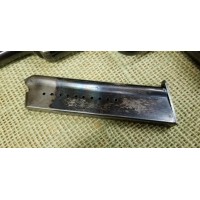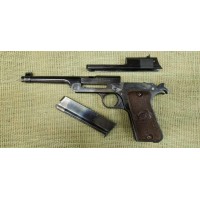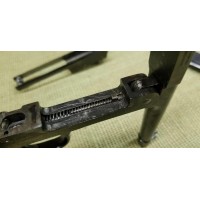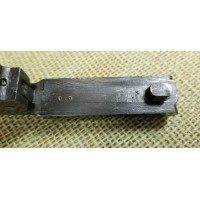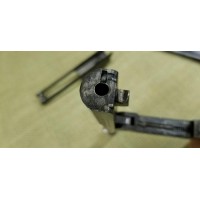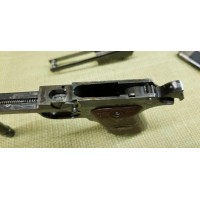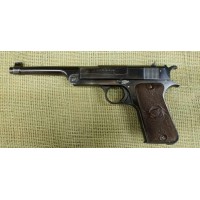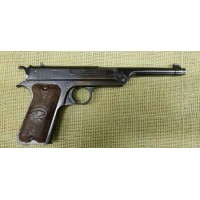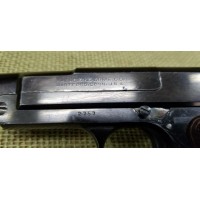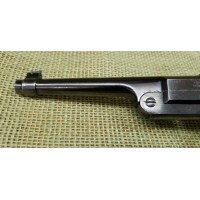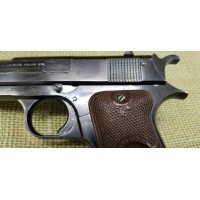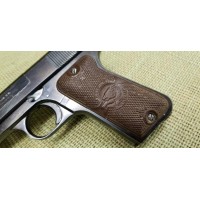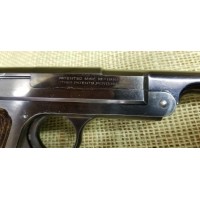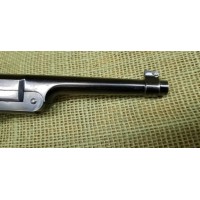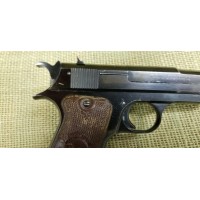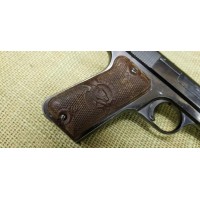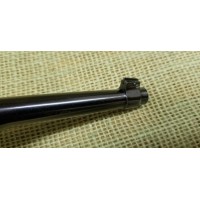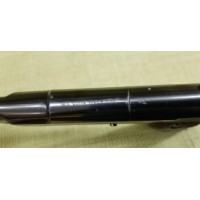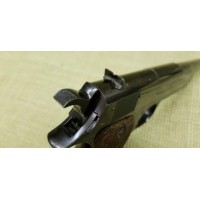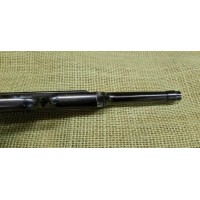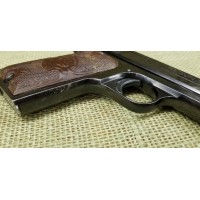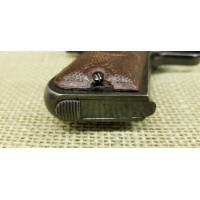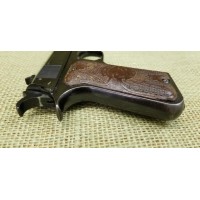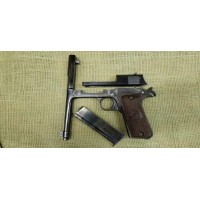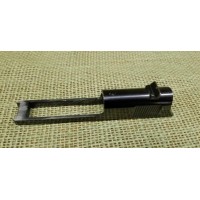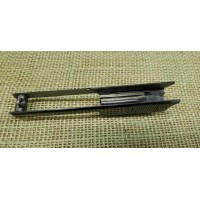Reising 1917 22lr PIstol
SOLD - $695 Reising 22lr pistol
14 shot two tone magazine
Breaks down into three parts with flip of a lever
Original grips have wear and chips
Below is some helpful information found on the web from Bev Fitchett's Guns Magazine:
This is a .22 caliber target pistol which was designed by Eugene G. Reising, a resident of East Hartford, Conn., to whom basic patents were issued on May 16, 1916, and October 25,
1921, according to inscriptions on the pistols. His first application relating to „a new and improved trigger mechanism for automatic fire arms" was filed on June 19, 1915. U.S. Pat. No. 1,183,115 was granted on this application on May 16, 1916. An application for a patent on „a new and improved fire arm," actually relating only to a new safety device to prevent accidental discharge, was filed on October 17, 1917, and U.S. Pat. No. 1,359,746 was granted on this application on November 23, 1920. On January 2, 1917, two aplications were filed, one for an improved extractor and the other for an improved ejector, upon which U.S. Pats. Nos. 1,309,337 and 1,309,338 were granted on July 8, 1919.
The date at which full production began is not known, but the arm was first made by the >Reising Arms Co. of Hartford, Conn., and these will be found to be so marked on the left side. The serial numbers, also on the left side, apparently started at No. 1. On the right side of the pistols of this first series appears the two-line inscription „PATENTED MAY 16, 1916-OTHER PATENTS PENDING." The series is characterized not only by the presence of the Hartford markings and this inscription but also by the use of 12 V-shaped oblique serrations forming the finger grips on the slide. There are a number of small structural variations in this series and differences in the sights used. Reportedly, serial No. 1 had checkering on the trigger. Whether other specimens of the first production had such checkering is not known, but if so it was soon given up.
Presumably the October 25, 1921, patent date was put on pieces made soon after that date. Inasmuch as specimens bearing only the 1916 patent date are known to have serial numbers above 2800, it appears safe to conclude that at least that number of pistols had been produced by the latter part of 1921. Somewhere around 1922 the firm moved to New York City and took the name The Reising Corporation, which implies that there was a reorganization.
Serial numbering on pistols produced in New York starts at 10,000, which no doubt is an arbitrary figure and gives no clue to how many were actually made at Hartford. The highest serial number reported for the Hartford series is slightly above 3500 and the total number produced very likely did not exceed 5000. The first of the New York series seem to contain various components left over from the Hartford production. For example, the 12 V-shaped serrations in the finger grips still appear and certain machining characteristics of the Hartford series are also evident, but they are not present in the later specimens of the New York series. The Hartford characteristics mentioned continue to appear in the numbering range 10,000 to about 10,400, at which point a new type of serrations for the finger grips on the slide was adopted. These are nine in number and are square cut, resembling those used on the Savage pistol. Observed specimens also have a long cross-serrated ramp back of the foresight and an adjustable rear sight. Otherwise, the pistols of the two series are very much alike. The foresight is naturally mounted on the barrel, while the rear sight is mounted on the slide, a feature considered as undesirable by many expert shooters. Alignment of the sights is more permanent when they are both mounted on the same piece of rigid metal.
The number of pistols made in New York is not known, but it has been conjectured that it probably did not exceed 1000. The pistol was tested for gallery practice by the Army on August 21, 1921, but was found to be unsatisfactory. In 1924 there were additional tests, indicating that the pistol was still in production in that year. Again the pistol was rejected and it appears that production ceased not long thereafter.
The Reising pistol was comparatively simple in construction and appeared to possess many good features, but unfortunately it faced very serious competition at a time when such pistols had not become highly popular. It consists of three principal sections: the barrel (hinged type), the receiver, and the slide (Fig. 233). No barrel locking device was necessary because of the relatively low pressure produced by the .22 cal. L.R. ammunition used. The force of the explosion is absorbed by the recoil spring and the inertia of the slide and other moving parts. The frame of the receiver extends forward well beyond and above the trigger guard and the front end is hinged to the barrel by means of a snugly fitting transverse bolt which can be easily removed if desired. At the rear end of the barrel is a locking lug on the lower side which, when the barrel is lowered into position, engages a turning bolt and locks the barrel securely. Upon rotating this bolt, by sliding a button on the left side of the receiver, the barrel is unlocked and the rear end can be raised for inspection or cleaning.
The breechblock is an integral part of the slide and contains the spring loaded firing pin and extractor. The recoil spring is located in a tunnel below the rear part of the barrel. This spring contains a plunger at the forward end, and an arm pushes against the head of this plunger, when the pistol is fired, thus forcing back and compressing the spring as the slide moves back. The rear end of the slide pushes back the external hammer to the full cock position, at the same time compressing the spring which operates the hammer. This coil spring is located in the grip frame, back of the magazine. As the slide passes over the disconnector the latter is forced down to disengage the trigger from the sear. As the hammer comes into the fully cocked posi tion, the sear is forced by a spring to engage in a notch, thus holding the hammer at full cock. The sear bar and sear remain disconnected until pressure on the trigger is released, allowing the sear spring to force the trigger back to the firing position. As the breechblock flies forward under the pressure of the compressed recoil spring it strips a cartridge from the top of the magazine and chambers it, and the extractor hook rides over the rim of the cartridge in position to extract it after firing. Because of the construction of this pistol no shell ejection port is necessary, thus making the arm more water- and dirt-proof.
As a safety feature the pistol has an automatic disconnector, operating on the principle of that used in the Colt, preventing more than one shot being fired for each pull on the trigger. Also the arm cannot be fired unless the breech face and the rear end of the barrel are firmly in contact, thus preventing premature firing. There is also a magazine disconnector which prevents firing when the magazine is out. And, lastly, the exposed hammer is a safety feature, not only because it shows whether the arm is cocked but also because it has a long spur which makes it possible to lower it to a safe position, i.e., at „half cock."
The magazine has an unusual capacity of 14 cartridges. As is the case for many other pistols, the magazine has perforations which makes it easy to see how many cartridges are in it.

